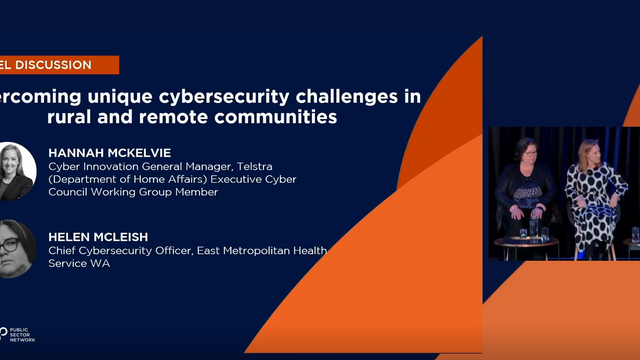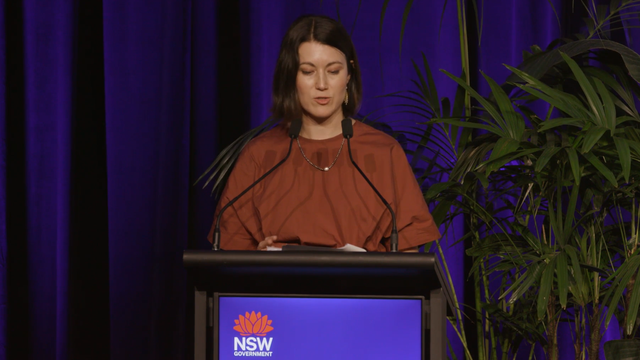Spotlight on our Keynote Session with Christopher Clissold, Chief Information Officer, Director General IT/IM Administration and Privacy, Veterans Affairs Canada
Working with Legacy IT Systems
There is an understanding in our modern world that as soon as a new piece of technology is released, it is almost immediately obsolete because the next iteration is waiting in the wings. In the case of IT systems, this is quite a truism and thus there are many legacy systems still in place. In fact, Christopher Clissold , the Chief Information Officer and Director General of IT/IM Administration and Privacy at Veterans Affairs Canada, says that IT systems generally operate on a 20 year cycle. You often have a wonderful, large system that does a lot of your core processing, but then 20 years down the road, it becomes obsolete and you spend a lot of money actively working to replace it.
Clearly this is an unsustainable process, but is common across many departments, and was the standard at Veterans Affairs as well until 2015. We provided a standard IT service where business groups focused on analog processing to solve problems, but our core processing system was aging. It was over 15 years old, and rather than changing the system – which was expensive and no one knew what to change it to anyway – the department simply hired more staff to deal with “a legacy system that needed to be updated three times a year.
By 2016, it was clear that a change was needed, so we started with a digital strategy. What this meant was that we outlined investment opportunities in technology that would allow innovation in the digital space. This was necessary because taking an analog process and making it digital is not okay; that just makes it worse. The intention was to truly make something digital by modernizing and enabling the processes. As part of that, though investment of new systems is required, the goal was to limit the investment in our legacy systems. As a department, a decision was made that any new programs or benefits for veterans, or changes to existing programs, were not going to be done through our legacy systems any longer.
Changing the Work Processes
However, having made such a decision, implementing it through the existing processes was complicated. In fact, it became impossible and thus we had to change the way we worked. The usual process – at Veterans Affairs and probably everywhere – was that when things go bad, we put folks in a room and then question what happened. This worked well for a while, but we decided to turn it on its head. We wanted to put them in a room at the beginning so that they participate with us and build software with us. It was about putting folks together to solve problems before they arise. To make it work, there had to be a change in governance and in the culture of the organization, but that eventually happened and though not everything worked smoothly, we were experimenting and learning as we went so that when we got further down the line, we’d have the skills and knowledge to be able to tackle the really complex problems.
The result of this change to the working environment was that we created a future facing architecture. The technology was Microsoft CRM Dynamics, which includes cloud technology, but rather than create a monolith, we used the technology to create a modular system that we could adapt as we needed. In other words, this kind of architecture allowed us the flexibility to create what we needed when we needed it. The idea of such a system was to run our legacy in parallel for a while as a way of slowly phasing out the legacy systems altogether, rather than converting all the data to the new system.
Much of 2016 was devoted to setting up this new process and ensuring that all the elements worked together. Then, once we set up the digital framework with the strategy, we started to look at things that were coming down the pipe. The first of these was the departmental budget of 2017, which included an education and training benefit for veterans, and career transition services. This is where we started to put into place the architecture that we built. For the education benefit, we put folks in a room and they came up with a fully digitized process where people apply and receive a response without anyone ever looking at an application. The career transition services were equally fully automated, and all of that was part of the future facing processes, where applications could be added as required.
The budget of 2018 was a more complicated and bigger operation, and this is where we started to scale. There were twelve separate teams working on various elements of the budget process from an IT architecture perspective, including on things like pensions and life insurance for veterans. By the end of the process, we replaced approximately 40% or more of our legacy systems with the new digital systems, and seemingly overnight, all the processes changed and so did all the operational aspects. There were some issues with data warehousing and governance, but given the new ways of working, these issues were easily overcome.
Moving Away from Legacy Systems
The goal from the outset was to replace the old legacy systems, but to do it in a way that made sense without costing too much and without encroaching on other projects. So far, since the digital upgrade began, we have replaced 45% to 50% of our legacy systems at the moment and we continue to move forward with some other projects, and will replace more as we go. The architecture that we built is allowing us to do it piece by piece rather than a big bang release. Veterans Affairs essentially did this on their own, but currently there is an openness in the federal government for these kinds of projects.
One of the benefits for Veterans Affairs was that we also made large investments in automation and have a few projects on the go in that sphere as well. On top of that, other teams that don’t directly work in the IT space or with technology, are also using a similar approach now – bringing people together at the beginning of their projects. This isn’t about changing job titles or rearranging the organizational chart. It is instead about employing an an agile framework to bring people together to solve common problems. For us it has been about continuous improvement.
In theory, many of the legacy systems that Veterans Affairs uses have now hit the 20 year mark, or are even older. But with new technologies and a modular architecture, we can take pieces out and upgrade them one at a time so that we get a whole new technology stack supporting our core modern businesses and override the legacy systems.
For Veterans Affairs, this has worked because there was a clear goal from the outset. We built a strategy, changed the way we worked, created a future facing architecture, found opportunities to show our value, and managed the products as we went. There’s always going to be an opportunity and the key thing is to grab it and make it sustainable.
“To overcome the legacy systems, technology is important, but really it is about having a product management mentality, treating it as a product upgrade each time, and constantly improving and going forward. That way, now and in 20 years from now, we’ll be in much better shape.”
Christopher Clissold, Chief Information Officer, Director General IT/IM Administration and Privacy, Veterans Affairs Canada




































